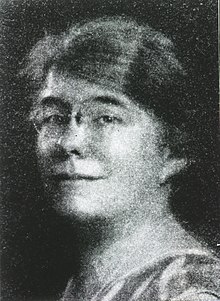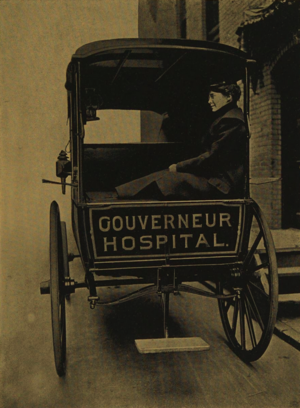
Pennsylvania Hospital is a private, non-profit, 515-bed teaching hospital located in Center City Philadelphia and is part of the University of Pennsylvania Health System. Founded on May 11, 1751, by Benjamin Franklin and Thomas Bond, Pennsylvania Hospital is one of the earliest established public hospitals in the United States. It is also home to America's first surgical amphitheatre and its first medical library. The hospital's main building, dating to 1756, is a National Historic Landmark.
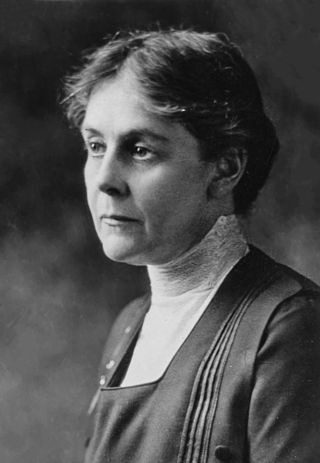
Alice Hamilton was an American physician, research scientist, and author. She was a leading expert in the field of occupational health, laid the foundation for health and safety protections, and a pioneer in the field of industrial toxicology.
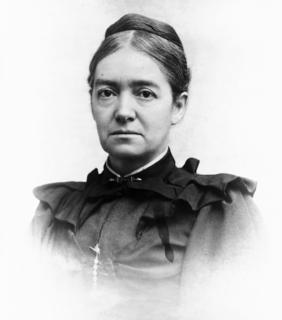
Mary Corinna Putnam Jacobi was an English-American physician, teacher, scientist, writer, and suffragist. She was the first woman admitted to study medicine at the University of Paris and the first woman to graduate from a pharmacy college in the United States.

Elizabeth Blackwell was a British and American physician, notable as the first woman to earn a medical degree in the United States, and the first woman on the Medical Register of the General Medical Council for the United Kingdom. Blackwell played an important role in both the United States and the United Kingdom as a social reformer, and was a pioneer in promoting education for women in medicine. Her contributions remain celebrated with the Elizabeth Blackwell Medal, awarded annually to a woman who has made a significant contribution to the promotion of women in medicine.

Emily Blackwell was a trailblazer in the 19th century, making numerous contributions in the field of medicine and women's rights. Emily was the second woman to earn a medical degree at what is now Case Western Reserve University, after Nancy Talbot Clark. In 1993, she was inducted into the National Women's Hall of Fame. Emily made major advancements in the medical scene, assisting in the start of the New York Infirmary for Indigent Women and Children and creating the Women's Central Association of Relief. Emily, along with her sister Elizabeth Blackwell, had established the Women's Medical College in New York City. Shortly after, Emily helped form the London School of Medicine for Women.

NewYork-Presbyterian Lower Manhattan Hospital is a nonprofit, acute care, teaching hospital in New York City and is the only hospital in Lower Manhattan south of Greenwich Village. It is part of the NewYork-Presbyterian Healthcare System and one of the main campuses of NewYork-Presbyterian Hospital.

New York Eye and Ear Infirmary of Mount Sinai (NYEE) is located at East 14th Street and Second Avenue in lower Manhattan, New York City. Founded on August 14, 1820, NYEE is America's first specialty hospital and one of the most prominent in the fields of ophthalmology and otolaryngology in the world, providing primary inpatient and outpatient care in those specialties. Previously affiliated with New York Medical College, as of 2013 it is affiliated with the Icahn School of Medicine at Mount Sinai as a part of the membership in the Mount Sinai Health System.
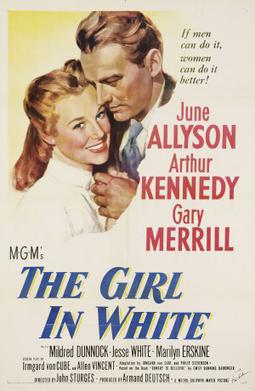
The Girl in White is a 1952 American drama film directed by John Sturges and starring June Allyson, Arthur Kennedy and Mildred Dunnock. It is based on the memoirs of the pioneering female surgeon Emily Dunning Barringer.

Alexa Irene Canady is a retired American medical doctor specializing in pediatric neurosurgery. She was born in Lansing, Michigan and earned both her bachelors and medical degree from the University of Michigan. After completing her residency at the University of Minnesota in 1981, she became the first black woman to become a neurosurgeon. This came after Ruth Kerr Jakoby became the first American woman to be board certified in neurosurgery in 1961.

Hilda Crosby Standish was a pioneer in the birth control movement in the state of Connecticut. In 1935, she became medical director of the Maternal Health Center in Hartford, the state's first birth control clinic. Dr. Standish was inducted into the Connecticut Women's Hall of Fame in 1994.
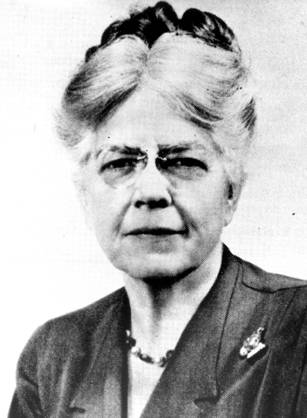
Connie Myers Guion was an American professor of medicine. She was influential in developing health care systems for the poor in New York City and training programs for new health care professionals at Cornell Medical Center. She founded the Cornell Pay Clinic, which supported the poor in the city and brought in training. She was the first woman to be named professor of clinical medicine, and in 1963 became the first living woman physician to have a building named after her. Up until her death, she made many house calls and ran her own private clinic.

Liebe Sokol Diamond was an American pediatric orthopedic surgeon and an inductee of the Maryland Women's Hall of Fame.
Dorothy Dunning Chacko was an American social worker, humanitarian and medical doctor, whose efforts were reported behind the establishment of a lepers' colony at Bethany village, in Ganaur, Sonepat district in the Indian state of Haryana. She was a Hall of Famer of the County of Delaware, Pennsylvania a recipient of the Take the Lead Honour from the Girl Scouts of Eastern Pennsylvania and the Smith College Medal. She was honoured by the Government of India in 1972 with Padma Shri, the fourth highest Indian civilian award.
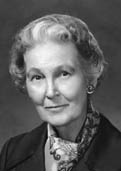
May Owen was a Texas medical doctor who discovered that the talcum powder used on surgical gloves caused infection and scar tissue to form on the peritoneum. She was the first woman elected as president of the Texas Society of Pathologists (1945), of the Tarrant County Medical Society (1947), and of the Texas Medical Association (1960). She endowed the second chair of the Texas Tech University School of Medicine and received many awards during her career, including induction into the Texas Women's Hall of Fame, Recognition of Merit from the Texas Medical Association, and receipt of the George T. Caldwell Award from the Texas Society of Pathologists.

Emily Winifred Dickson was an Irish medical doctor who was the first female fellow of the Royal College of Surgeons in Ireland. She was also the first female fellow of any of the Royal Colleges of Surgery in Great Britain and Ireland.
Martha Minerva Franklin was one of the first people to campaign for racial equality in nursing.
Ursula Joyce Yerwood was the first female African American physician in Fairfield County, Connecticut, and founder of the Yerwood Center, the first community center for African Americans in Stamford, Connecticut.
Ligia Peralta is a Dominican-born doctor of pediatrics and adolescent medicine in Maryland. Her research focuses on HIV and the transmission of HIV in adolescents, specifically those from under-served communities.

C. Annette Buckel was an American physician and the first female doctor in Oakland, California. Buckel worked to improve the welfare of women and children through her medical practice as well as her activism. During the Civil War, she appointed and supervised nurses in addition to nursing in the field.

Emily Pierson was an American suffragist and physician. Early in her career, Pierson worked as a teacher, and then later, as an organizer for the Connecticut Woman Suffrage Association (CWSA). After women earned the right to vote, she went back to school to become a physician in her hometown of Cromwell, Connecticut. During much of her life, she was interested in socialism, studying and observing in both Russia and China.
